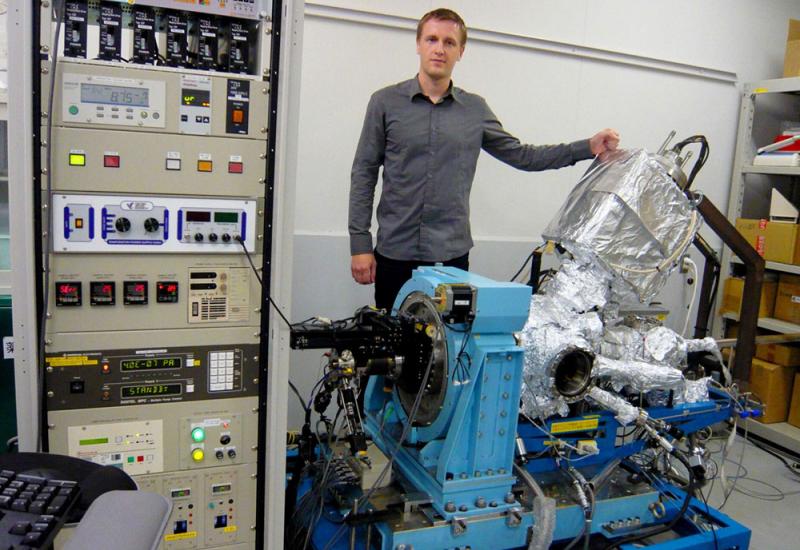Recently, scientists of E.O. Paton Institute of Materials Science and Welding of Igor Sikorsky Kyiv Polytechnic Institute witnessed a notable event in international science. As a sign of high appreciation of the Igor Sikorsky Kyiv Polytechnic Institute contribution to the joint activities with the world-famous synchrotron center SPring-8 (Japan) and based on the Memorandum of Cooperation of July 29, 2019, the Japanese partners donated Igor Sikorsky Kyiv Polytechnic Institute a set of high-tech ultra-vacuum research equipment worth a total of 1 million 311 thousand UAH. The cargo has already arrived at E.O. Paton Institute of Materials Science and Welding. Serhii Sydorenko, Vice-Rector for International Relations, Academician of the NAS of Ukraine, tells in-depth about this event and cooperation with the Japanese partners in science and technology.
- Serhii Ivanovych, what was the background of such a present? What was the cooperation with Japanese scientists like?
- First, let us remember how it all started. Our cooperation began in January 2013, when the RIKEN SPring-8 Center (RSC) Director, Dr.Eng. Tetsuya Ishikawa visited Igor Sikorsky Kyiv Polytechnic Institute. He participated in the seminar “New horizons in scientific and technological cooperation with Japan”. Dr.Eng. Tetsuya Ishikawa also met with scientists from several faculties of Igor Sikorsky Kyiv Polytechnic Institute (FPE, FEL, FCT, FMP), who work in the field of solid-state physics and chemistry. The Japanese guests also visited the University Training and Research Center for X-ray Structural Analysis “KPI – RIGAKU”, which operates based on E.O. Paton Institute of Materials Science and Welding. The same month, Igor Sikorsky Kyiv Polytechnic Institute had the honor to host Nobel Prize Laureate in Chemistry, President of the National Institute of Physical and Chemical Research of Japan RIKEN (includes SPring-8 Research Center), Dr.Eng. Ryōji Noyori. During the negotiations, the parties reached many cooperation agreements. Later, Igor Sikorsky Kyiv Polytechnic Institute signed the Memorandum of Cooperation with the RSC.
Our University identified the areas of cooperation with the Japanese partners: interdisciplinary research at the intersection of solid-state physics and chemistry, biotechnology (including basic studies of water structure), the fundamental basis of applied medicine and pharmaceuticals, etc. Of course, we invite all researchers from other University units who work in basic research and want to try their hand at working with the RSC. The Ukraine-Japan Center of Igor Sikorsky Kyiv Polytechnic Institute will assist all those who want to cooperate with Japan in science, technology, and innovation.
… For 7 years, young researchers of E.O. Paton Institute of Materials Science and Welding are engaged in a research program of the National Institute of Physical and Chemical Research of Japan RIKEN. They successfully perform joint research at the RSC in “Structural-phase transformations in the surface layers of transition metals under energy influences”. In June 2019, a joint meeting of the scientists of E.O. Paton Institute of Materials Science and Welding and the RSC approved the research approaches for the coming years.
I want to emphasize that initiative and high authority young scientists of E.O. Paton Institute of Materials Science and Welding made the establishment and development of cooperation with the SPring-8 Research Center possible. They are: Candidate of Technical Sciences (Ph.D.) A.K. Orlov won on a competitive basis and completed five (!) three-month internships in SPring-8; a postgraduate student I.O. Kruhlov had two three-month internships; Associate Professor I.A. Vladymyrskyi twice went on business trips to leading scientific centers in Japan. These young scientists of E.O. Paton Institute of Materials Science and Welding became the first in Ukrainian science who went to the RIKEN SPring-8 Center!
The cooperation of our young scientists with RIKEN and its effectiveness is a topic of a separate conversation. I hope the newspaper “Kyiv Politechnic” will cover it in the following issues.
- Serhii Ivanovych, tell us a little more about the research facilities presented to Igor Sikorsky Kyiv Polytechnic Institute by the Japanese partners.
- The donated set of modern high-tech ultra- -vacuum research facilities consists of an electron beam evaporator, equipment for thermal and ionic surface treatment of materials tests, for corrosion tests, from electric measuring instruments, accessories, and spare parts. We will launch a laboratory of modern fundamental materials science based on the research facilities from Japan at campus 9. The laboratory will serve as a reference point for developing scientific cooperation with the synchrotron center SPring-8. It will also become a base for the latest laboratory work within disciplines provided by young physicists-materials scientists of E.O. Paton Institute of Materials Science and Welding.
One should say that the international scientific activity of young scientists of the Institute and the appropriate development of the education and laboratory base fully complies with the University Strategy 2020-2025 and the E.O. Paton Institute of Materials Science and Welding Strategy.

